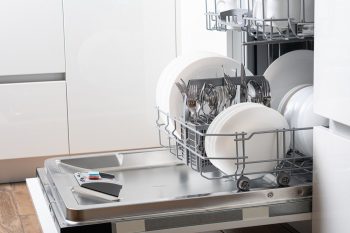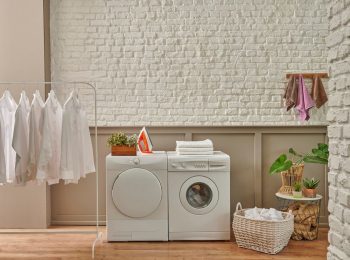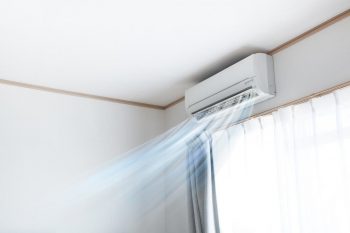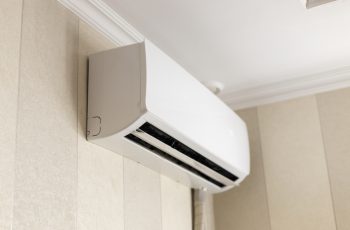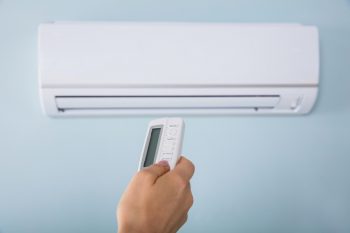
A water leak in your home can be an overwhelming and stressful experience. You’ll not only face the hassle of finding the source of the leak, but if water damage has already occurred, it can take days or even weeks to clean up properly.
After you’ve taken the necessary steps to fix and repair the leak, running a dehumidifier is one of your most important next steps.
Dehumidifiers can help reduce moisture, which helps prevent mold growth.
But have you ever wondered how long I should run a dehumidifier after a water leak? If you’re unsure, don’t worry; we’ll explain the answer here.
- For one room in your home, 24-48 hours with a household unit should be enough.
- Consider the size of the affected area to determine if a larger unit is necessary.
- It would be best if you kept running the dehumidifier until you have reached desired humidity levels in your home (typically between 30% and 50%).
- Consider the type of water damage (whether a burst pipe or something else caused it).
- Make sure to empty the water reservoir and clean out the filter regularly.
Can’t decide if you should run a dehumidifier after a water leak? Here we will answer questions such as what humidity levels are ideal for your home, how to choose the right dehumidifier size, and some tips on maintaining it.
Why Use a Dehumidifier After a Water Leak?
Using a dehumidifier after a water leak is essential to the clean-up process. Landing moisture in your home from a flood or other water damage can create an ideal breeding ground for mold and mildew.
Mold spores spread in moist environments and, if left unchecked, can cause respiratory problems or other health issues.
A dehumidifier can help to dry out the affected areas quickly and reduce your risk of mold growth. It works by sucking in damp air, removing moisture, and releasing dry air into the environment.
It will not only help in preventing further damage to your home but can also help reduce “musty” odors that come with water damage.
Ultimately, using a dehumidifier after a water leak can help you avoid costly mold clean-up and repair bills in the long run.
So if you have experienced water damage in your home, running a dehumidifier is essential for restoring your home to its pre-damage state.
Make sure to take the proper safety precautions when using a dehumidifier. Always unplug the unit and allow it to cool before attempting to empty the water reservoir or clean out the filter.
And remember, you should never leave a dehumidifier unattended for more than 24 hours.
How Long Should You Run a Dehumidifier After a Water Leak?
When running a dehumidifier after a water leak, the answer isn’t as simple as “24 hours.” It would be best to consider a few factors to determine the time needed.
If you find any visible mold, do not attempt to clean it yourself. Hire a certified mold removal service to ensure it’s done properly.
1. Size of Affected Area
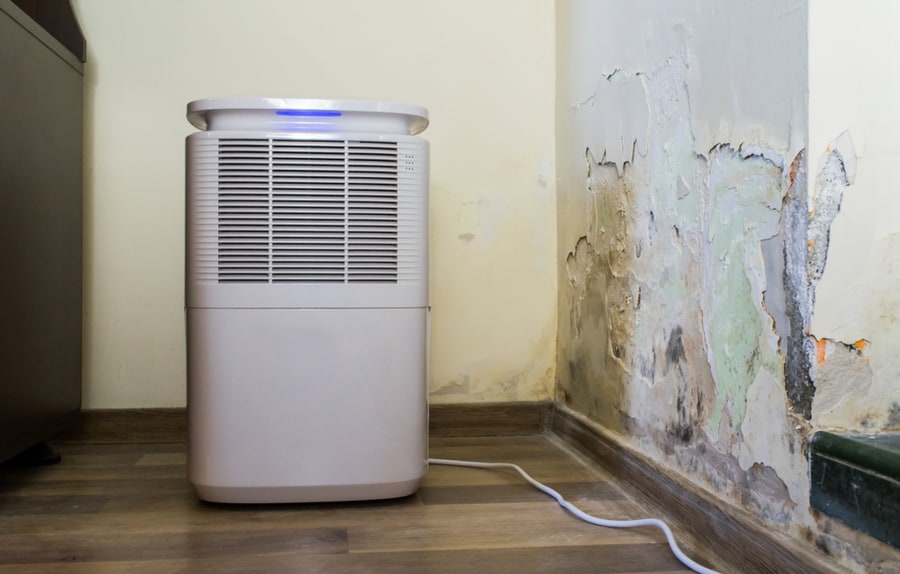
The size of the damaged area will determine how long you run the dehumidifier. For example, if a utility closet has been affected, you can get away with running the dehumidifier for a day.
However, if your whole house has suffered water damage, you will likely need to run several dehumidifiers for several days.
2. Level of Humidity
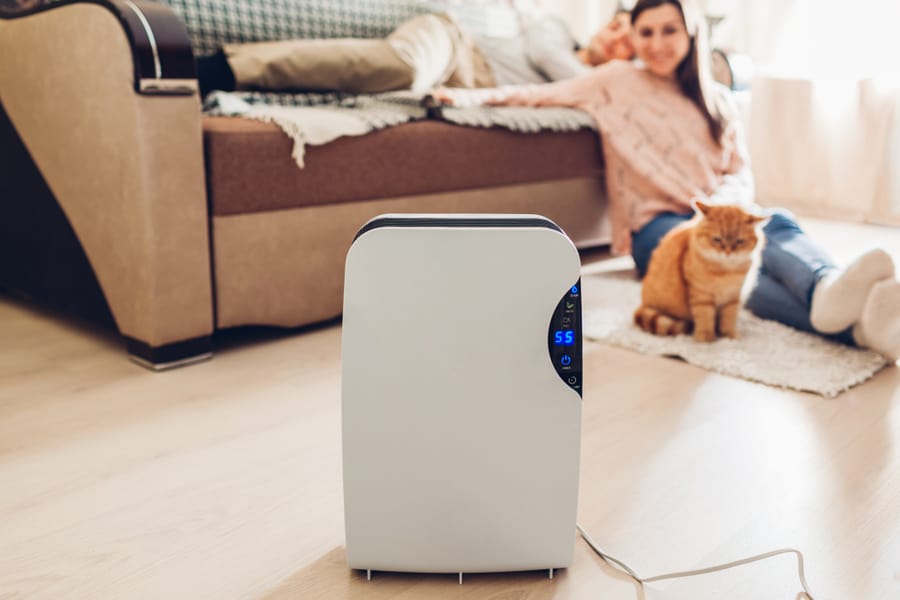
Before using a dehumidifier, it’s important to measure the current humidity level in your home using a hygrometer. The ideal humidity level is between 30%-50%.
You will need to run your dehumidifier for longer if it’s higher. Whereas if the air is already dry and below 30%, you should avoid using a humidifier.
3. The Extent of Water Damage

The type of water damage you’re dealing with is another essential factor. In case of extensive water damage, it will take longer to clean up and dry out your home than a small leak.
For example, if your home has recently suffered flooding or a sewer backup, then it’s likely that the entire area will need to be dried out. You’ll need to run an industrial dehumidifier for several days or weeks to fully dry out the affected area.
While comparatively, a small localized water leak will only need a few days of running the dehumidifier to be sufficiently dried out.
Wait until the water has been completely removed before turning on your dehumidifier. If you turn it on too soon, the extra moisture can damage electrical components in your unit or cause a fire hazard.
4. Type of Dehumidifier

How long you need to run your dehumidifier also depends on the type of unit you’re using. If it’s a household dehumidifier, then 24-48 hours should be enough for one room in your home.
However, if you’re dealing with larger areas or multiple rooms, consider investing in an industrial dehumidifier designed for larger spaces.
5. Air Flow

Another factor to think about is the airflow in your house. The dehumidifier may take longer to function successfully if the air in your home cannot circulate freely.
Therefore, it’s important to ensure that all furniture and curtains are moved away from windows and doors, allowing adequate ventilation.
6. Temperature
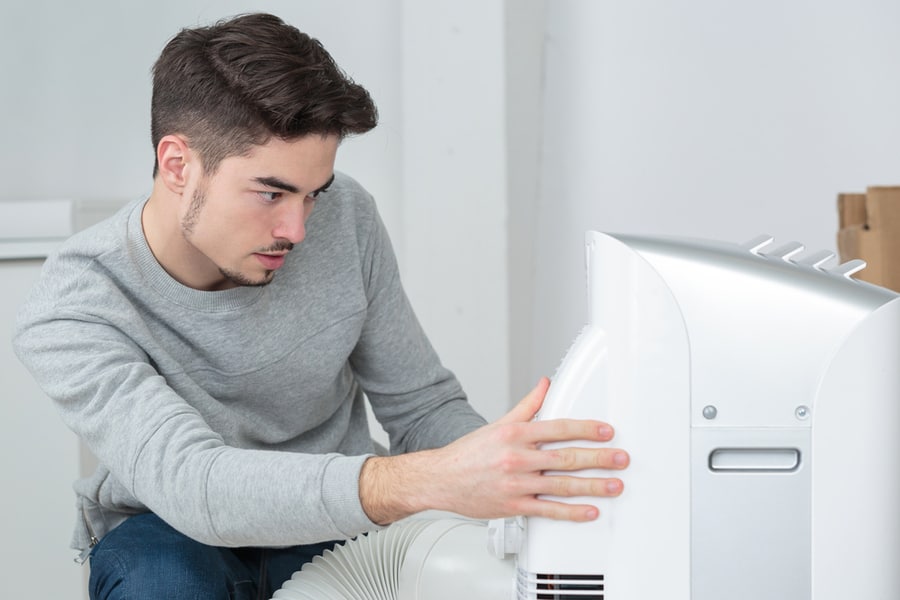
Lastly, you’ll need to consider the temperature of the room. The colder it is, the longer your dehumidifier will take to work.
That’s because cold air holds less moisture than warm air, and it takes more time for a dehumidifier to extract water from cold air. It’s best to keep the room at a comfortable temperature to speed up the drying process.
Conclusion
While it’s impossible to determine how long you should run a dehumidifier after a water leak, the above factors can help you guess. If your damage is limited to one room and the humidity level is above 50%, then 24-48 hours with a household unit should suffice.
However, you may need to run it longer if the area is larger or the humidity level is lower. In any case, measuring the humidity level and using the right dehumidifier type for your specific situation is important.
Additionally, ensure good air circulation and that the temperature in the room isn’t too high.
Frequently Asked Questions
How Often Do I Need To Clean My Dehumidifier?
Your dehumidifier needs to be kept clean and well-maintained. Regularly inspect the filter for dust and debris, and clean it as necessary. And if you detect any problems or odd noises from your appliance, call a professional for repair.
Therefore, it’s essential to routinely empty the water tank to guarantee that your dehumidifier operates effectively and to its maximum potential.
How Do I Know When My Home Has Dried Out?
The best way to determine if your home is dry is by using a digital hygrometer. It will measure the humidity levels in your home and let you know when it is back to normal.
Alternatively, if you don’t have access to one of these, try pressing a paper towel against different surfaces throughout your home. If the towel stays dry after 30 seconds, then this means that your home is completely dry.

